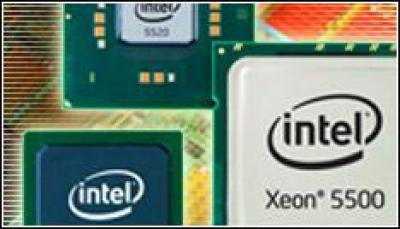Intel’s profits and revenue dropped sharply in the first quarter of this year, but CEO Paul Otellini claimed that the PC industry is showing signs of recovery.
“We believe that PC sales bottomed out during the first quarter and that the industry is returning to normal seasonal patterns,” Otellini said in a statement.
Intel outperformed Wall Street expectations by posting $7.15 billion in revenues. In addition, CEO Paul Otellini said during a conference call with analysts and journalists that he believes the PC market—battered by the global recession—had hit bottom in the first quarter, and that a seasonal buying pattern would resume starting in the second quarter.
Revenues were down 26 percent over the first quarter in 2008, and 13 percent over the fourth quarter. The $670 million in profits was down 55 percent over the first quarter a year ago, but up 176 percent over the fourth quarter.
Otellini would not give specific revenue guidance for 2009, average selling prices continue to drop and some parts of Intel’s business—such as its Atom processors—struggled, which threw off some analysts.
“Intel’s commentary is somewhat of a mixed bag,” Daniel Amir, an analyst with Lazard Capital Markets, said in a report. “Strong results are a positive indicator for the PC market, as its CEO Otellini’s declaration that [the first quarter] was the bottom in PC sales. Nevertheless, management was not specific about revenue guidance (flattish) and visibility remains low.”
John Spooner, an analyst with Technology Business Research, agreed. In saying the bottom had been reached in the PC market, Otellini “painted a picture of a PC industry that is on the path to growth again,” Spooner wrote in a report. “Although it’s on a slow path, Intel says that the industry has done away with its inventory glut and begun to slowly increase PC production again.”
However, Spooner said, challenges to Intel remain. The company’s average selling prices will continue to be under pressure as consumers and businesses “look for the greatest bang for the buck” when buying new PCs, searching in the lower end of the spectrum among computers with the Atom, Celeron and low-end Core 2 processors.
“The chip maker faces the difficulty of significantly boosting shipments in a market that is still extremely fragile,” he wrote. “The bottom could drop out again should consumers, whose notebook purchases have helped to support the fledgling market turnaround thus far, suddenly retrench. Until the time in which businesses begin purchasing en masse again—and that doesn’t seem likely until late in 2009 and more likely 2010—we believe that Intel will grapple with giving up some revenue and profits [for lower average selling prices] as it enables consumers to trade down to lower system price points to keep them coming back for more.”
Roger Kay, an analyst with Endpoint Technologies Associates, said Intel’s results were positive, and agreed with Otellini that the PC market seems to be turning around and that seasonal buying patterns would probably resume, which would mean that sales in the second quarter would be about the same as the first, with the third and fourth quarters showing increases. Kay also pointed out that even with shipments at 80 percent of what would be normal, “that’s still a lot of equipment.”
There appears to be a pickup in orders from March in April, “and what we’re seeing seems to be something of a revival,” Kay said. “But we have to be careful about that and [whether to call it] a recovery.”
There also are some hopeful signs, he said. Microsoft’s rollout of Windows 7—expected sometime in summer 2009—also could give a bump to PC sales, and the netbook market could come in around the $20 million range.
Kay, who in his years with research company IDC would forecast the PC market, also said Otellini was smart in not giving more specific guidance for the rest of the year, given the volatile and fragile nature of the economy.
“Forecasting gets real good in stable times,” Kay said. “The moment everything starts to break up, the forecasting gets very difficult. There’s an issue of how good [forecasting] can [be], and in this economy, visibility is quite low.”
Not everyone was convinced that the market is returning to a seasonable sales picture. Hans Mosesmann, an analyst with Raymond James Equity Research, said it was no surprise that Otellini would predict such a return.
However, “we would argue that Intel is not the best source in terms of predicting demand several quarters out,” Mosesmann said, adding that “Intel is executing quite well in a tough environment.”
Another Raymond James analyst, Brian Alexander, said in a report that Intel’s numbers give some insight into what to expect from Hewlett-Packard and Dell, the top two global PC makers. The two vendors have a tight financial relationship with Intel: HP and Dell represent 20 percent and 18 percent of Intel’s net revenue, respectively.
Given the numbers Intel announced, Alexander wrote that he expects HP’s PC revenues to decline 10 percent over the fourth quarter, and Dell’s to drop 5 to 10 percent.
Alexander also said much of Intel’s expected seasonal bump could come from the fact that vendors will need to restock their shelves rather than from user demand.
“Overall, while Intel’s results are encouraging, we believe that it may be driven by a replenishment of lean inventories in the channel, as end-market demand is soft, although better than earlier in the year,” Alexander wrote.




